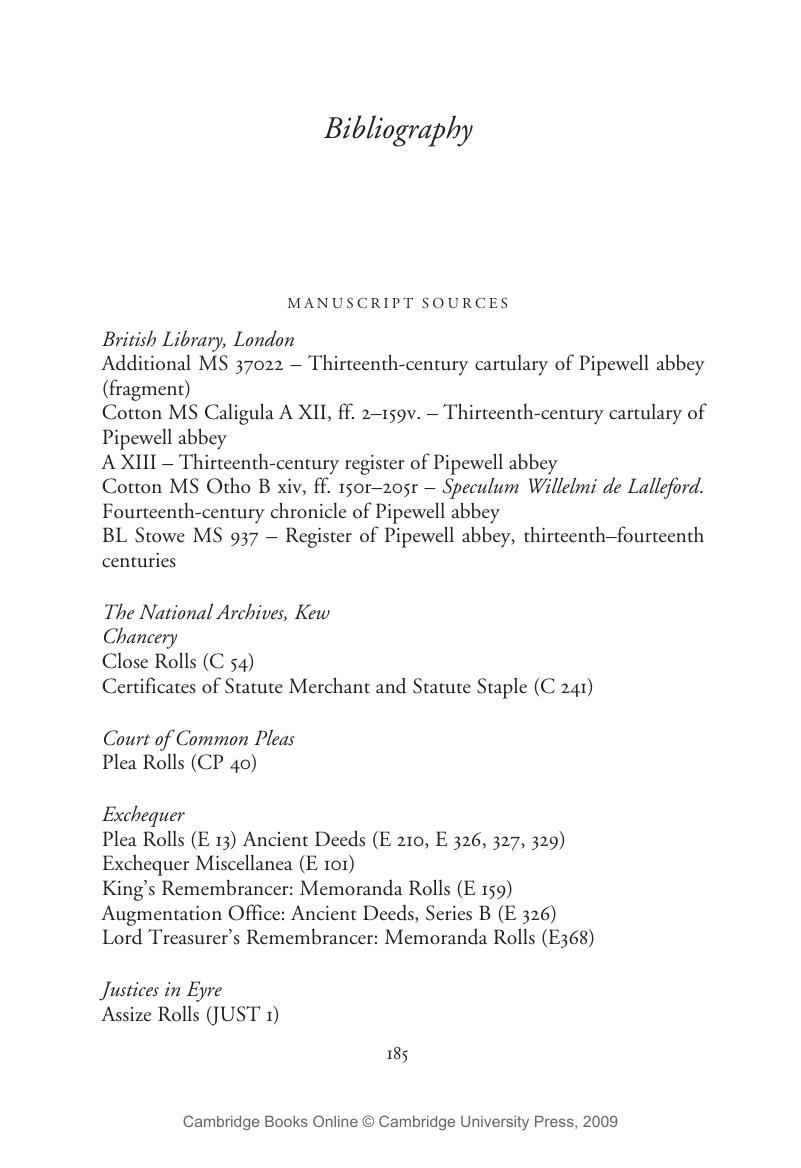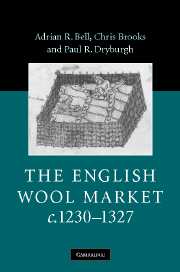Book contents
- Frontmatter
- Contents
- Acknowledgements
- Notes on weights, measures and monetary units
- Glossary of wool terms
- 1 Introduction
- 2 Advance contracts for the sale of wool
- 3 Case study – Pipewell Abbey, Northamptonshire
- 4 Modern finance in the Middle Ages
- 5 Conclusions
- Appendix 1 Sample contract
- Appendix 2 Summary facts and figures of contracts
- Appendix 3 List of contracts
- Bibliography
- Index
- References
Bibliography
Published online by Cambridge University Press: 28 July 2009
- Frontmatter
- Contents
- Acknowledgements
- Notes on weights, measures and monetary units
- Glossary of wool terms
- 1 Introduction
- 2 Advance contracts for the sale of wool
- 3 Case study – Pipewell Abbey, Northamptonshire
- 4 Modern finance in the Middle Ages
- 5 Conclusions
- Appendix 1 Sample contract
- Appendix 2 Summary facts and figures of contracts
- Appendix 3 List of contracts
- Bibliography
- Index
- References
Summary

- Type
- Chapter
- Information
- The English Wool Market, c.1230–1327 , pp. 185 - 192Publisher: Cambridge University PressPrint publication year: 2007



